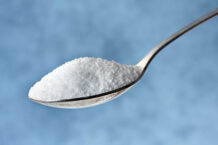There has been so much conflicting information about the health attributes of chocolate over the years that it’s understandable if you’ve begun to tune out the latest headlines. Mostly, the news is good, with studies showing that dark chocolate eaten in moderation has benefits. But there have also been some concerning reports that you might not want to ignore if chocolate is one of your favorite indulgences.
First, the good news
Studies show that cocoa powder (also called solids), a primary ingredient in dark chocolate, is a rich source of flavanols. These plant compounds have antioxidant, anti-inflammatory, and anti-clotting properties that may help reduce the risk of cardiovascular disease. Most of the studies showing benefits have not been sufficiently large or long-lasting to draw significant conclusions, but one—the COcoa Supplement and Multivitamin Outcomes Study (COSMOS), which followed 21,442 men and women for an average of 3.5 years—found a 27 percent lower risk of cardiovascular death among those who took a daily cocoa extract containing 500 milligrams of flavanols.
Just this past February, the U.S. Food and Drug Administration (FDA) approved a qualified health claim about the relationship between cocoa flavanols and reduced risk of cardiovascular disease, allowing high-flavanol cocoa powders (but not chocolate) to state on their labels something to the effect of: “Daily consumption of at least 200 milligrams of cocoa flavanols per serving may reduce the risk of cardiovascular disease. FDA has determined that the evidence is supportive, but not conclusive, for this claim.” Most products do not have enough flavanols to qualify, however. For instance, none of the 12 products tested by ConsumerLab.com—a company that provides independent test results and information about health and nutrition products—passed muster for high levels of flavanols.
And now, the bad news
In December 2022, the independent consumer advocacy organization Consumer Reports got a lot of attention when it published test results on a wide range of dark chocolate bars. Also in December, ConsumerLab.com published an update of its comprehensive review of dark chocolate bars, cocoa powders, chocolate chips, hot cocoa mixes, cacao nibs, and cocoa dietary supplements. That review was further updated in February.
Much to chocolate lovers’ dismay, both companies found concerning levels of cadmium in many of the products they tested. Consumer Reports also flagged several chocolate bars for exceeding California’s Prop 65 lead limits, which are more stringent than FDA’s upper limits for lead. In contrast, ConsumerLab.com, which used FDA limits in its analyses, found that most cocoa-based products contained lead at levels well below that considered unsafe, though it did flag two hot cocoa mixes specifically marketed to children for exceeding the upper lead limit for that population.
Truth be told, this is not new news: The presence of these toxic heavy metals in chocolate has been known for a long time, and the nonprofit shareholder advocacy group As You Sow has been testing chocolate products for sale in California since 2014. Based on its findings, As You Sow filed legal notices with more than 20 companies—including Godiva, Ghirardelli, Hershey’s, Mars, and Trader Joe’s—for failing to alert consumers about lead and cadmium in their chocolate products, and in 2018 they reached a settlement with some of these well-known brands. More recently, class action lawsuits were filed against Godiva, Hershey’s, Lindt, Mars, and Trader Joe’s for failing to inform the public about the presence of unsafe levels of cadmium and lead in a number of dark chocolate products.
How extensive is the problem?
Consumer Reports found excessive cadmium in 13 of the 28 dark chocolate bars tested; ConsumerLab.com found excessive amounts in eight of 18 bars. ConsumerLab.com also found high levels of this heavy metal in one of two dark chocolate chips, three of 12 cocoa powders (a fourth was over the Canadian limit for children), and both cacao nib products evaluated. As You Sow maintains a robust list of tested products, and among its more sobering results were elevated cadmium levels in chocolates from popular brands such as Dove, Ghirardelli, Godiva, Lindt, Trader Joe’s, See’s Candies, and Whole Foods.
Of note, chocolate isn’t the only food that may be contaminated with heavy metals. In fact, testing by ConsumerLab.com this past January revealed concerning levels of cadmium in several flaxseed products. Other sources of cadmium in the U.S. diet include rice, cereals, breads, and leafy greens. Trace amounts can also be found in seaweed, seafood, and even peanuts and mushrooms, for instance. This underscores the fact that most foods—even ones we consider to be very healthful—come with some sort of potential risk.
Why is cadmium so dangerous?
Cadmium is classified by the Environmental Protection Agency (EPA) as a probable human carcinogen that may also affect fetal development. It is especially toxic to the kidneys and bones, and because it accumulates in the body, the health effects compound over time. While the FDA has not set a limit for cadmium in cocoa or other foods, the European Union and Canada have done so, and California requires a warning on food labels if a product sold in that state contains above a certain amount of the heavy metal per daily serving.
How do heavy metals get into chocolate, and how do we get them out?
The pods (large fruits) of the cacao tree each contain some 25 to 50 cacao beans (seeds), which are used to make cocoa powder and chocolate and consist of two components: cocoa solids and cocoa butter. Heavy metals such as cadmium and lead are found primarily in the cocoa solids.
Cadmium tends to accumulate in the beans as cacao trees grow and absorb cadmium from the soil. Some geographic regions naturally contain more cadmium, while others are contaminated by human activities such as the use of phosphate fertilizers and the manufacturing of nickel-cadmium (Ni-Cd) batteries. Lead gets onto cacao beans if dust and dirt containing lead stick to the outside of the beans as they are being dried outdoors after harvesting.
Knowing how these contaminants end up in chocolate is key to getting them out—but that’s easier said than done. Recommendations for reducing lead in cacao beans include minimizing their contact with soil while they’re drying, and employing practices during the cleaning, roasting, and shell removal phases that will optimize lead removal. Cadmium reduction is trickier and includes short-term solutions such as blending beans that are high and low in cadmium, and longer-term solutions such as treating or removing contaminated soil and altering cocoa genetics, so the beans take up less cadmium.
BOTTOM LINE: Reports about heavy metal contamination in dark chocolate are concerning, but there are things you can do to reduce your risk of adverse health consequences that fall short of forgoing this treat forever. Choosing safer products, eating smaller amounts, and making sure your diet contains adequate amounts of certain minerals are good ways to protect yourself (see box). You can also support companies that test chocolate products and put pressure on companies that make your favorite ones to clean up their act.
If you eat chocolate only on occasion, you probably don’t need to be concerned. But if you’re a chocoholic, here are some steps you can take to reduce contaminant risks:
- Choose products that Consumer Reports, ConsumerLab.com (subscription needed), and As You Sow have found to contain the lowest levels of cadmium and lead. That advice comes with a caveat, however, since there can be variations from batch to batch.
- Don’t assume if one product from a particular brand is acceptable that all products from that brand will be as well. Maddeningly, this is not the case.
- Stick to portion sizes listed on labels—or smaller. Even just a small bite or square of a good dark chocolate may be enough to satisfy a craving, while minimizing risk. Children, in particular, should not go overboard because they are more vulnerable to the toxic effects of heavy metals. Pregnant women should also err on the side of safety by minimizing intake.
- Make sure to eat a balanced diet that supplies adequate amounts of essential minerals, particularly calcium, iron, and zinc. These minerals can help protect you by reducing absorption of cadmium and lead.





